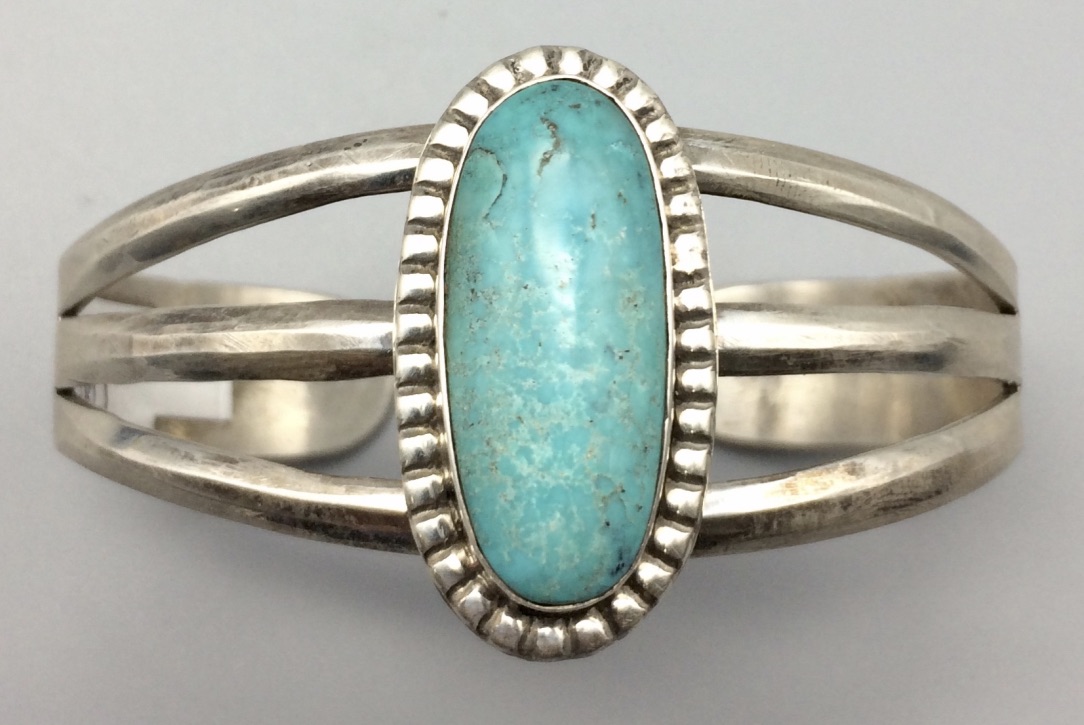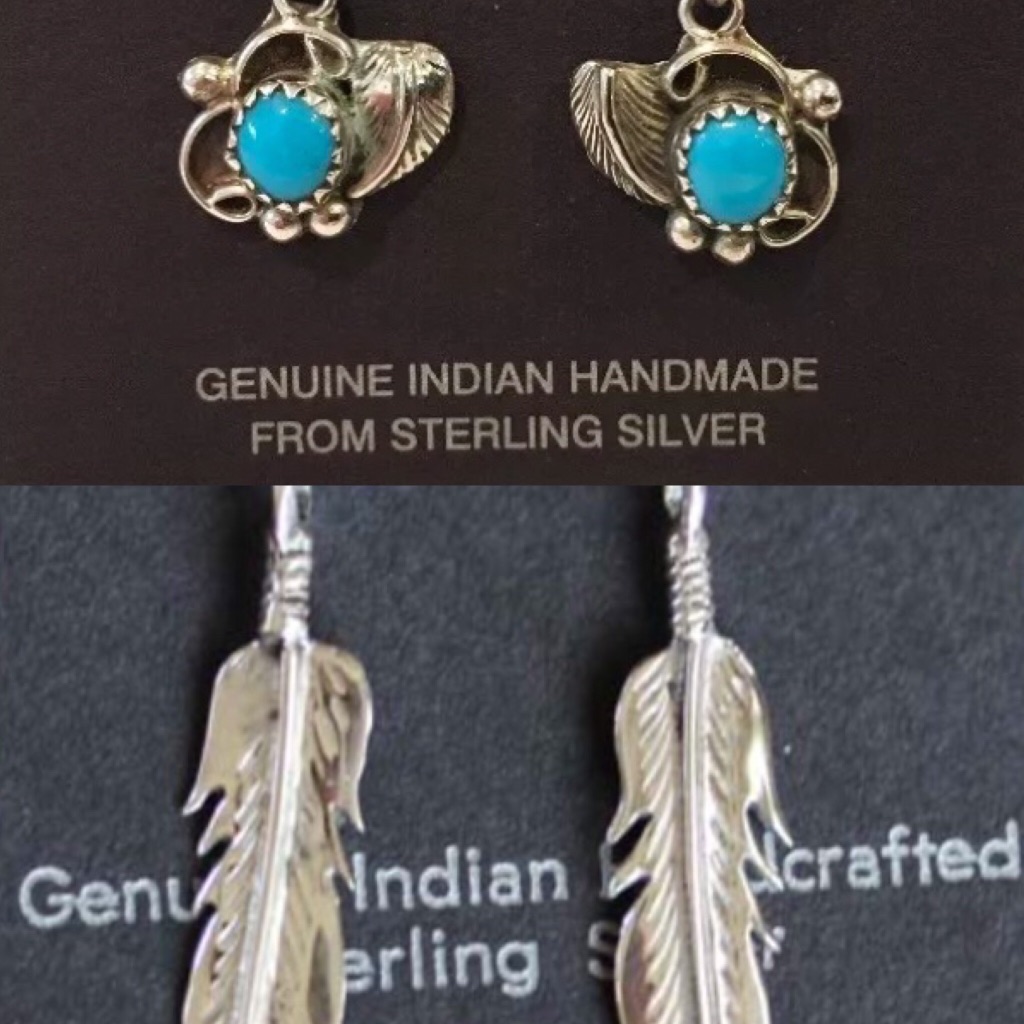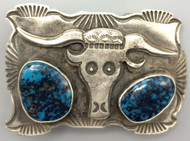Authentic Indian Jewelry???
Posted by Jim Olson on Dec 23rd 2017
There has been much news in the Southwest lately about allegations, arrests, and as of the time of this writing, one conviction, of a group of middle eastern gentlemen (dealers) who violated the Indian Arts and Crafts Act of 1990 by selling non-Indian jewelry as authentic. Now obviously, fraud is fraud and selling import jewelry as Native made is not only against the law, it’s just plain wrong. However, we should ask, “Just what is authentic Indian jewelry?”
Back in the late 1930s, the Indian Arts and Crafts Board (IACB) came up with a set of standards to adhere to before an item could be considered “Indian Handmade.” Those standards included things such as: one must use silvers slugs (ingots) and melt them down (no sheet silver allowed); all turquoise must be untreated in any way and be completely hand-cut and polished by the silversmith; all stamps (dies) had to be handmade and hand-applied to the item; all items had to be polished (buffed) by hand and basically no machines (modern tools) or machine made parts or pieces could be used in any way by the silversmith—nor could they have been used on the materials he was using.
It did not take long for those standards to meet opposition from silversmiths and dealers alike. The standards were just about impossible to meet, not to mention unpractical for most. It’s kind of like telling a camper he has to start a fire by rubbing two sticks together instead of using modern technology, such as matches, if he wants to be considered a “real” woodsman.
But just what does constitute real Indian jewelry? First off, we should consider there is a difference between handmade and hand-assembled. For an item to be considered 100% handmade, do you have to follow the standards set forth by IACB back in the ‘30s?
For example, I have first hand knowledge of a Native Silversmith who acquired a bunch of old sterling silver spoons (which were made in England by the way). He took the spoons, melted them down and hand-crafted a belt buckle. Most would say, “That is a completely handmade buckle from melted silver (ingots).” You probably would not get much argument about the fact. But let’s consider the turquoise that beautifully adorns the face of the buckle? Although it is high-grade, it was mined in China, cut and polished by an anglo, then sold to our silversmith, who built a bezel and set the already prepared stone onto the buckle. Is this buckle still 100% “Indian Handmade” even though someone else prepared the turquoise?
Then you have what I will term “hand-assembled” jewelry. Silversmiths can (and many do) go to any number of jewelry supply stores where they purchase blanks (for bracelets, rings, etc.), precut turquoise, ready-made bezel cups for the stones, silver leaves, feathers, wire and other adornments for appliqué and then they go back to their work space and “assemble” a bracelet (or other items) from these ready made parts. Often the supplies they purchased were cast or manufactured in a facility overseas. Is this item still considered “Indian Handmade?” Or even 100% Indian made? Or is it just Indian assembled?
It’s kind of like someone who purchases a paint by numbers kit and fills in the blanks to create a painting. Even a non-artist like me can whip out a decent looking piece of art by simply filling in the blanks correctly. Does this even compare with an original painting by a master artist? Obviously not, but does that mean the piece is not really art?
Then you have mass produced “shop made” jewelry. Numerous shops throughout the Southwest hire silversmiths to produce similar looking pieces over and over. Most of these are made in an assembly line process where each person down the line completes a different task until the item is finished. A lot of these places hire Native workers to do the jobs and sell the items as authentic Indian jewelry.
But what if not every worker who worked in the process was a Native? Or perhaps the item was designed by a Native and then assembles by other workers. Is this still authentic “Indian” jewelry?
Way back in the early part of the 1900s, some started doing business this way in order to produce larger amounts of jewelry at lower production costs. Certain companies even used large presses to stamp out most of the parts and then had a Native worker set the stone or put the final buff on items which were subsequently sold as “Indian Made” jewelry. A large amount of the so-called Fred Harvey era jewelry was produced in this manner. All of it was sold later as Indian jewelry and today it is sought after by collectors. It was in response to these practices however that the IACB tried to set forth standards as mentioned above. But this issue and practices remain to this very today.
Where do you draw the line? The vast majority of independently produced Native American made jewelry today is made in a manner which combines the handmade and hand-assembled processes mention above. Often, items are purchased at the jewelry supply store which are already, ready for assembly. But at the same time, some of the piece is hand-cut from sheets of silver and formed, soldered, etc., then a turquoise stone, which often has been cut and polished by someone else, is applied. As long as the individual doing this is at least part Native, it is most often sold as an authentic Native American handcrafted piece.
When a shop owner hires Native people to do the same basic process on pieces over and over, it is also sold as authentic Native American handcrafted jewelry. But what if half of the people working there are not Native? Again, where do you draw the line.
According to The Indian Arts and Crafts Act of 1990, “It is illegal to offer or display for sale, or sell any art or craft product in a manner that falsely suggests it is Indian produced, an Indian product, or the product of a particular Indian or Indian Tribe or Indian arts and crafts organization, resident within the United States.” It goes on to state, “All products must be marketed truthfully regarding the Indian heritage and tribal affiliation of the producers, so as not to mislead the consumer.” And it says, “For example, products sold using a sign claiming "Indian Jewelry" would be a violation of the Indian Arts and Crafts Act if the jewelry was produced by someone other than a member, or certified Indian artisan, of an Indian tribe.”
Is a Native artisan in violation if he does not disclose the fact that others worked, at least in part, on the overall process? Is a silversmith who uses appliqué from the jewelry supply store required to disclose that someone overseas made part of his project (ie; imported findings)? Does he need to disclose that someone else cut and polished the turquoise which he purchased?
If a Native merely assembles the piece, is it authentic?
How about if a Native designed it, but it was made by someone else?
What about the shops where it is designed by an Anglo, then made by the Natives working for him?
What about the guy making wonderful hand-forged ingot jewelry, but uses turquoise he did not do the lapidary work on himself?
Obviously, there are many degrees of Indian Handmade / Handcrafted. The marketplace generally sorts them out naturally by price. A completely handmade piece from melted silver ingots using turquoise cut by the artist himself will generally cost a pretty penny compared to the “assembled” items a novice silversmith or an assembly line shop puts out. Luckily there is a buyer for every market and buyers should do themselves a favor by gaining an education as to which is which.
Back to the question of what is truly authentic Indian jewelry?
I believe the Indian Arts and Crafts Act was generally put into place to stop outright fraud like that mentioned in the beginning, whereby imported jewelry from the Philippines was falsely and purposely being sold as authentic Native made. However, there are a lot of grey areas, some of which have been addressed here. Where do you draw the line?
Jim Olson ©2017
Photos Captions Reference: Main photo is a belt buckle made from melted sterling silver (spoons) and was completely hand-forged and stamped. It has high-grade Chinese turquoise.

Photo 2 is a bracelet made completely of assembled parts that were purchased at a jewelry supply store in Gallup.

Photo 3, just about anything, including these assembled parts earrings gets put onto generic Indian Handcrafted cards.

